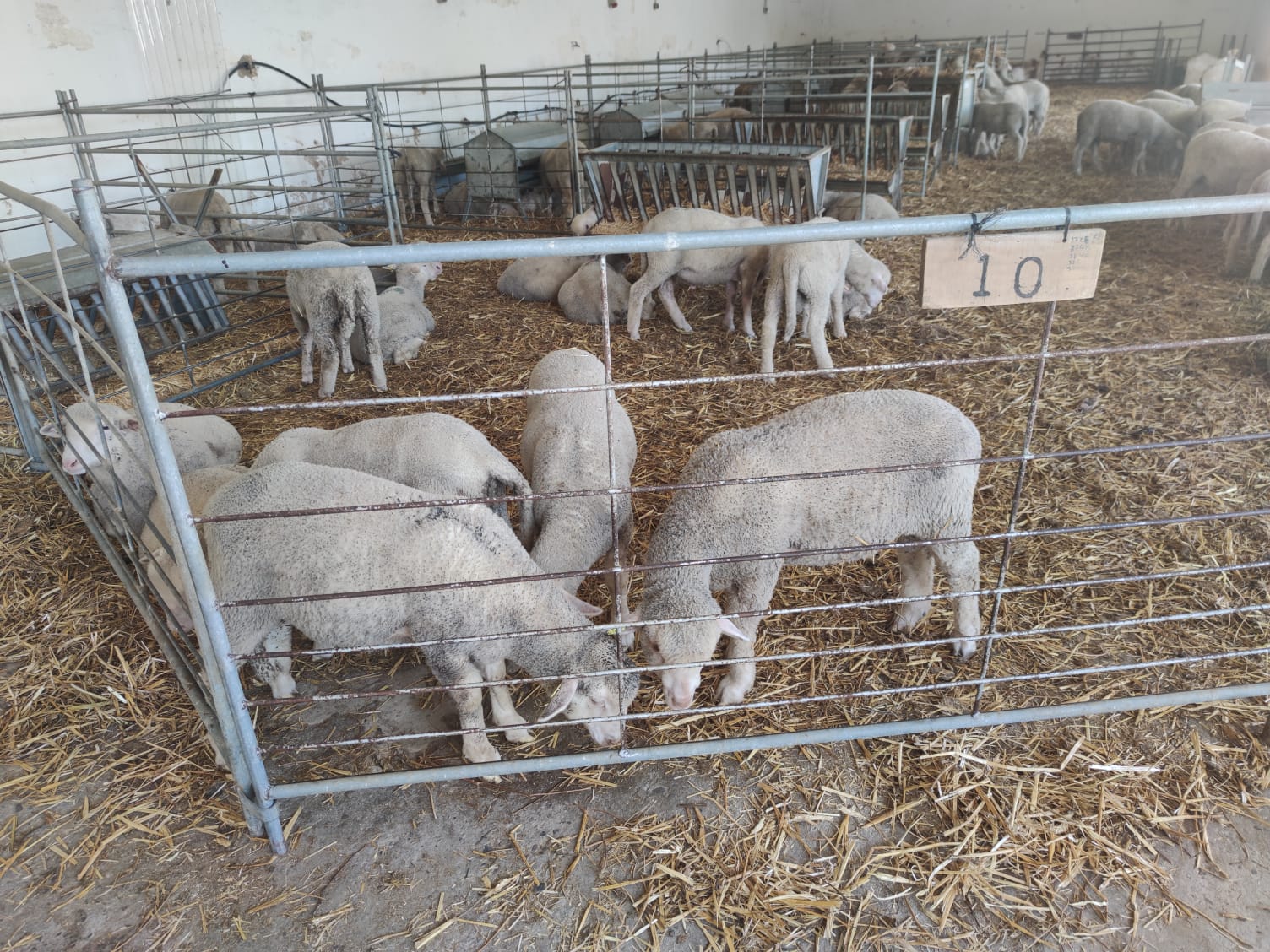Merina sheep
 General information
General information
Ovis Aries Turdetanus appears to be accepted as the ethnic root of the Merina breed. This name refers to the area in the South of the Iberian Peninsula where the breed was originated.
There are records of the Merina breed being used for farming purposes since remote times in the peninsula, where it acquired special significance for the economic, political and social development in general. Being an autochthonous breed of our country, the Merina is only found in Spain, where its rearing and production were perfected throughout generations to finally acquire a significant role of importance in the evolution of villages and cities.
The Merina breed was not exported to other countries until the last third of the 18th Century and beginning of the 19th Century, and its popularity soon spread to the markets of the five continents. We can firmly state that the batches of Merina sheep crossing our borders were the only origin of the current Merina breed population in the world, not only because it is the largest in numbers of heads at present, but because of its influence on the improvement and intervention in the creation of new breeds.
Its main qualities are its flock instinct and resilience, as well as its ability to travel large distances.
This breed is present in the entire national territory, in over 70% of the Spanish provinces. The main areas are the regions of Extremadura, Andalusia, Castilla y Leon and Castilla-La Mancha.
This is an average-weigh sheep, which tends to adopt a lengthwise shape, with straight profile and average proportions. The horns, where existing, are strong in the male, of pearly colour, spiral shape and ribbed with transversal grooves. In the female, it is very rare to find horns and these are generally quite rudimentary.
Their colour tends to be uniform white in the case of the white variety and brownie black in the black variety. The fleece covers the entire body with uniform structure and special characteristics in terms of thinness, curliness, elasticity and length. The density of the fleece is superior to that of other breeds.
This breed used to be employed in wool production, but the low production costs in other countries and the introduction of synthetic fabrics have driven a change in their use and they are now meat and milk producers.
 Wool production
Wool production
Highly-specialised breed due to its fleece, which stands out for its extreme length, density, thinness, uniformity, curliness, resistance and lack of dead wool or kemp fibre.
Merino sheep wool has a wide variety of properties that cannot be found in other types of fibre, i.e. high-thermal properties, excellent transpiration capacity, softness to the touch and no unpleasant smells, as it is naturally antibacterial, and protects from UV sunrays.
Besides, Merina wool is renewable, recyclable and biodegradable.
 Meat production
Meat production
Production of “Pascual”-type lambs. These lambs are 3 to 4 months old and are slaughtered when the lambs weight 23 to 26 kg.
The Merina sheep meat has an excellent texture that is very pleasant to the palate with moderate infiltration of intramuscular fat. It is very tender with little fat, mainly due to the age at which the lambs are slaughtered, as well as the rearing methods. Its aroma, bouquet and juiciness are excellent as a consequence of excellent fat distribution and quality.
 Milk production
Milk production
Generally speaking, the sheep milk production period is divided into two stages: 60 days, which is the breastfeeding period of lambs, and another 50 to 70 days, which are dedicated to milking. Average milk production per sheep and year can be estimated at 40 to 50 litres. One of the advantages of rearing sheep of the Merina breed is that they produce high-quality milk, used to produce cheeses with characteristic flavours such as La Serena, Torta del Casar, Pedroches.
The farming system used with this breed has been traditionally extensive and based on transhumance in order to take advantage of the pastures at different seasons. Currently, this practice has been abandoned and the system has turned to dehesa farming.
In addition to the importance of the Merina breed from an economic point of view, the breed also has a major role in the protection of the environment in the field. In fact, the role of the sheep in the protection and preservation of our ecosystems is being given more and more importance, mainly in the western world.







